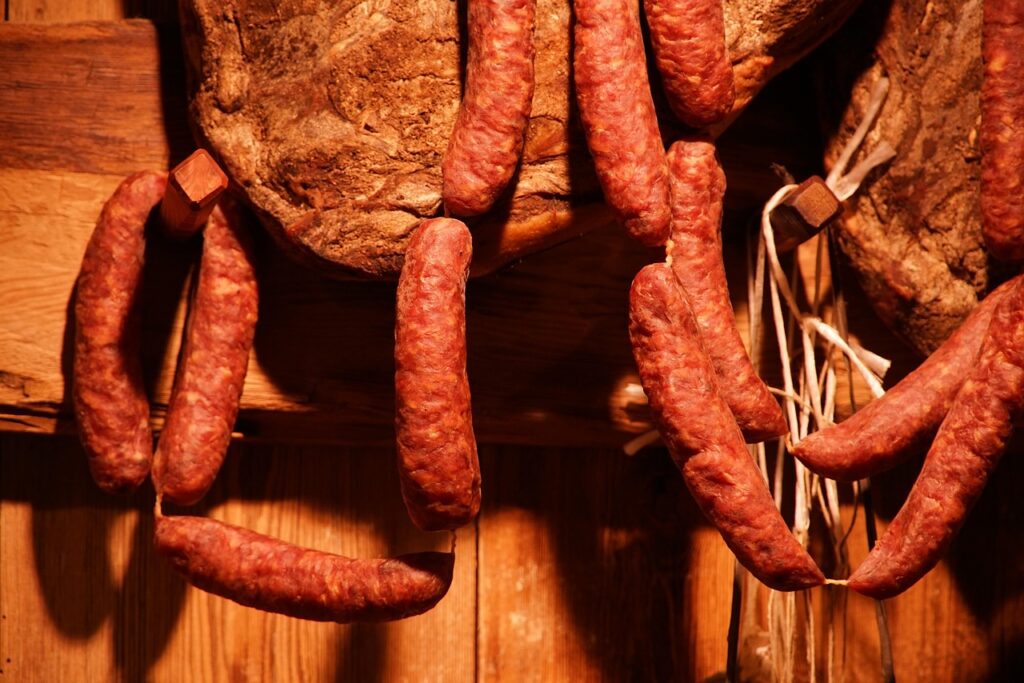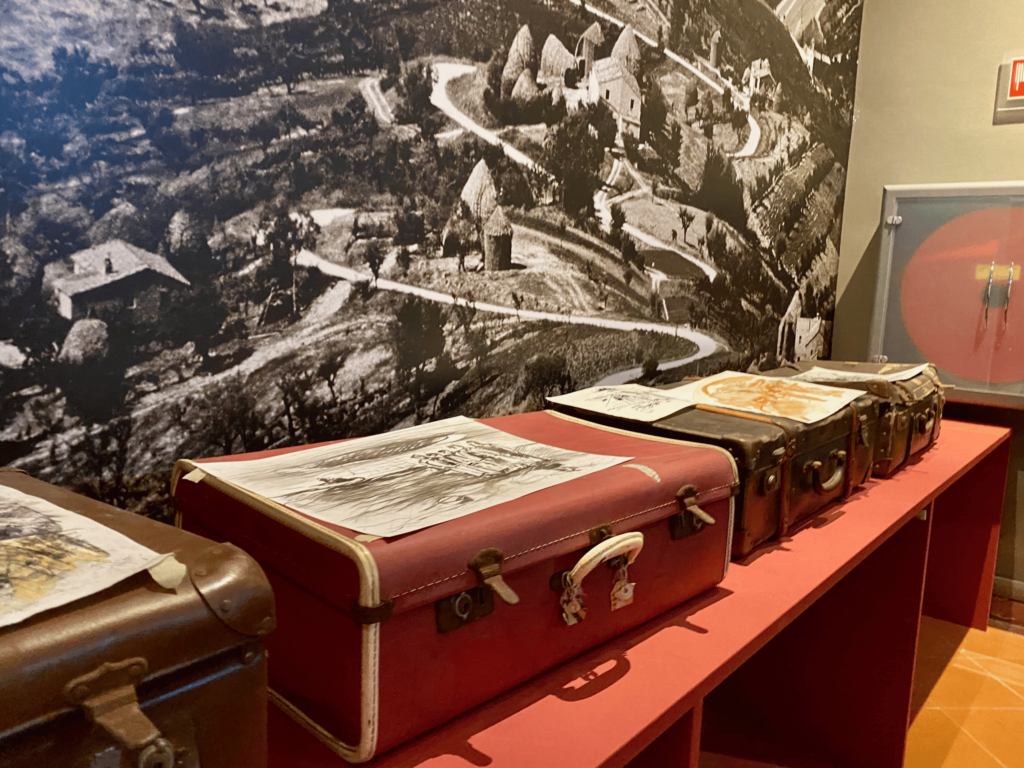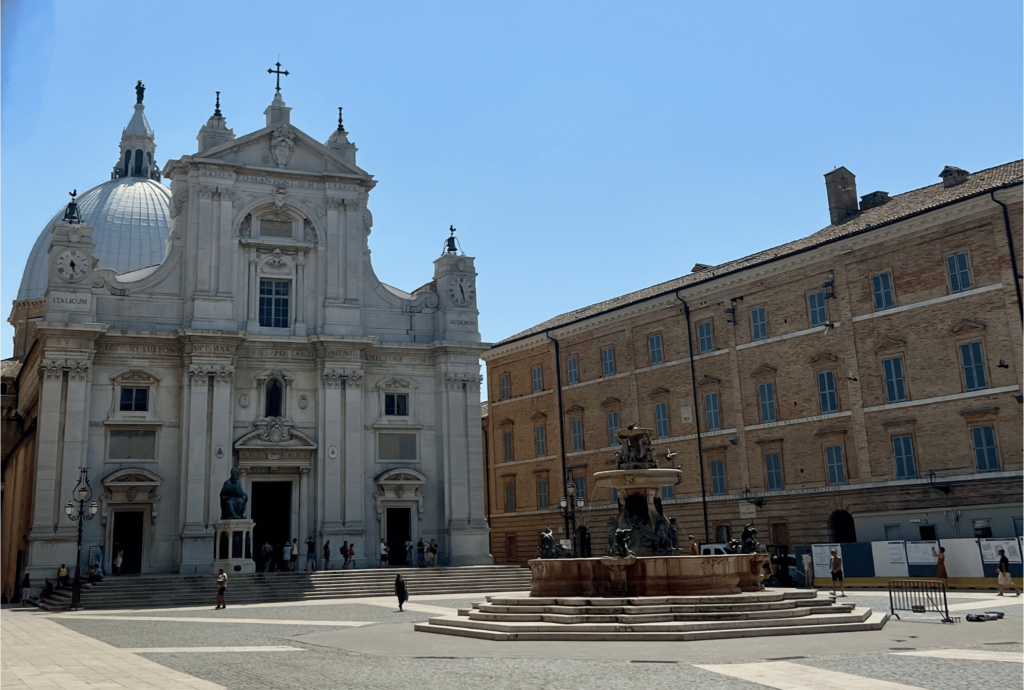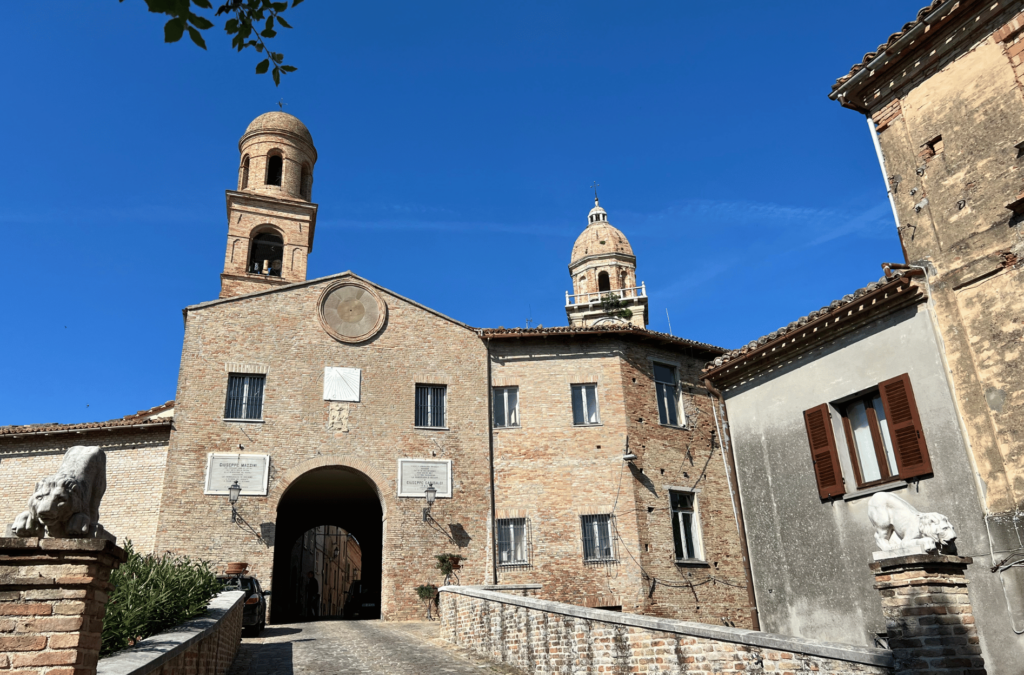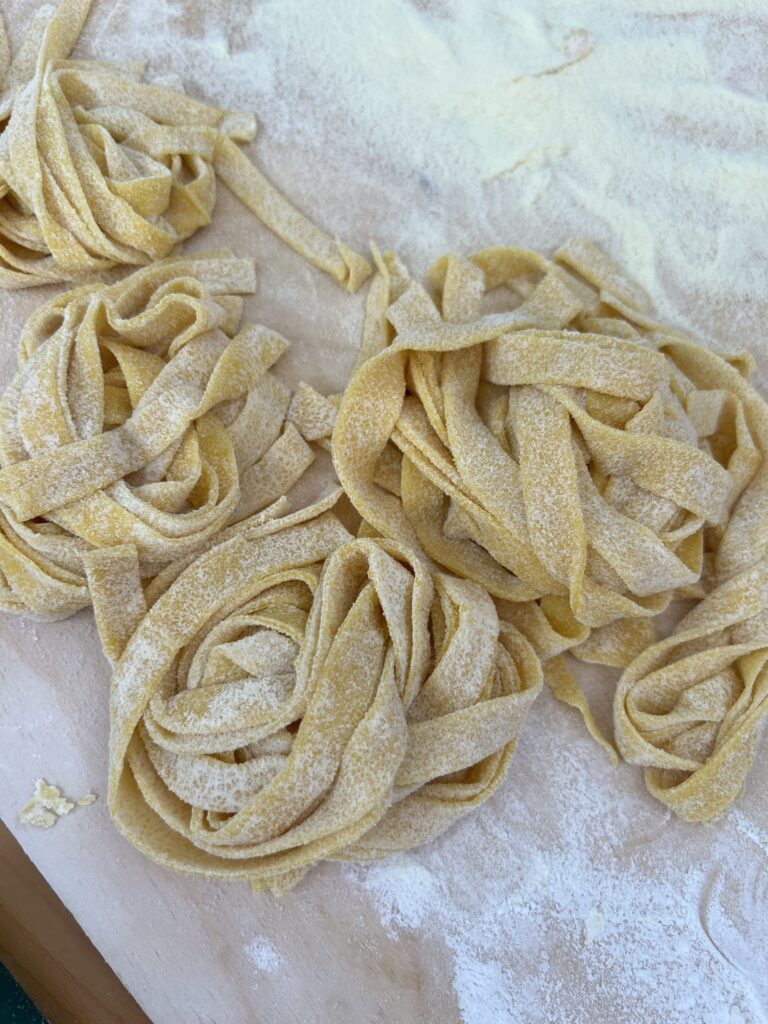There are traditions that tell the story of a territory better than any book, rituals that have marked the life of communities for generations and which, although less widespread today, survive in the memories and habits of those who love to keep alive the link with the past.
One of these is the “Pista” (also called “Salata” or “Porcina“), a dialect term used in the Marche region to indicate the processing of pork and the preparation of sausages. For peasant families, this ritual was not just a moment of food production, but a real social event, a day in which the community came together and shared ancient knowledge.
A time of waiting and preparation
The ideal time for the Pista was winter, between November and February, when the cold temperatures guaranteed better preservation of the meat. According to tradition, the slaughter had to take place during the days of the waning, cold and dry moon (such as November 30 or December 21). There was also a rule to be respected: never kill the pig on January 17, the day of St. Anthony the Abbot, protector of animals.
Each family raised at least one pig, feeding it with cereals, acorns, spoiled fruits, house scraps and even the so-called “broda”, the water used to wash dishes (without soap, of course). The animal grew up near the farmhouse, often in the same stable as the cattle or in a dedicated pigsty. The pig represented a precious source of sustenance: its meat would feed the family throughout the year.
A collective and family ritual
The day of the “Pista” began early in the morning. The men took care of the slaughter, while the women were busy processing the meat and preparing the various sausages. Every part of the pig had its own use: nothing was wasted. From hams to sausages, from coppa to bacon, to “ciccioli” and lard, everything was preserved with techniques handed down from generation to generation.
The final meal was also an important moment: the lunch at the Pista was an opportunity to savor the freshly processed meat. On the table there was no shortage of liver, pork rinds, trotters and even blood, cooked in various ways according to local customs.
The Pista today: a tradition that endures
If once the Pista was a necessity for peasant families, today it has become a ritual that some rural realities continue to keep alive, especially in the areas most linked to traditions. In some families in the Marche region, the day of the Pista still coincides with the Epiphany. For example, among us there are those who remember that the children, upstairs, talked and played with the gifts brought by Santa Claus or the Befana, while downstairs the adults were intent on working the pig.
The Pista tells of a simple and authentic way of life, where the sharing and enhancement of resources were fundamental. A piece of Marche culture that deserves to be known and remembered.
